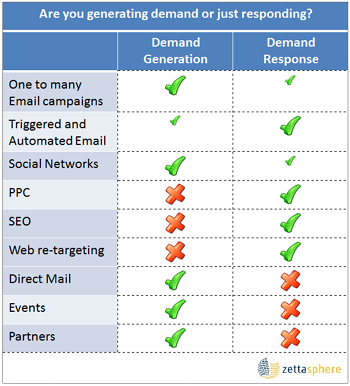 Don’t get me wrong, there is a definite place and value in triggered and automated emails. I know the value they can bring from the strategies I’ve implemented using them.
Don’t get me wrong, there is a definite place and value in triggered and automated emails. I know the value they can bring from the strategies I’ve implemented using them.
However, there is a good reason why automated emails can’t replace the traditional one to many bulk email campaign.
The reason is simply, the primary use of automated email is to respond to a customer action. That means a customer first needs to take an action.
But a customer can’t search for solution or browse your website for a product they don’t know exists. Or even more extreme, search for a solution to a problem they don’t know they have!
 This is the difference between demand generation and demand response. Triggered emails are primarily responding to customer behaviour. They rely on there being customer demand to which automation can kick in and respond.
This is the difference between demand generation and demand response. Triggered emails are primarily responding to customer behaviour. They rely on there being customer demand to which automation can kick in and respond.
Nobody ever searched or browsed to buy a tablet before Apple created the market and generated the demand for them.
Daily deal based emails are a classic demand generation email, as compared to the classic trigger emails, welcome and basket abandon.
Only by offering products and solutions that a customer has never previously shown direct interest in can you generate demand and get a response that you can service. The fashion industry is very good at generating demand through continually changing fashions and seasons.
What’s the best strategy for email marketing?
Integrate use of bulk one to many campaigns and triggered automated email campaigns, so they work together and build stronger overall email marketing.
- Focus on generating demand in bulk campaigns to gain a customer response
- Once you’ve got a response follow up with automated email to nurture interest through to the conversion.
- Use behavioural data to improve relevance in all your bulk and automated emails.
